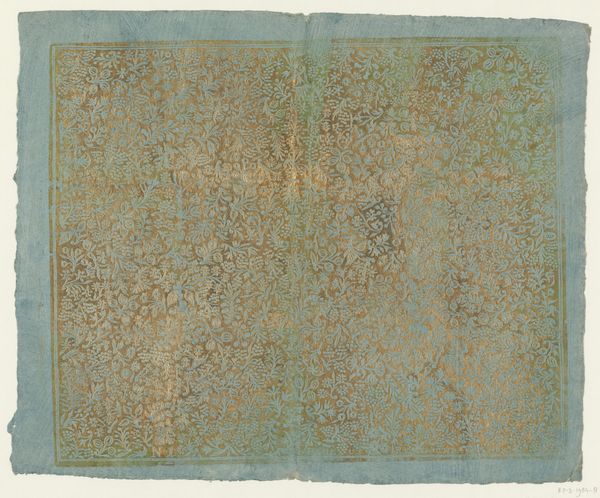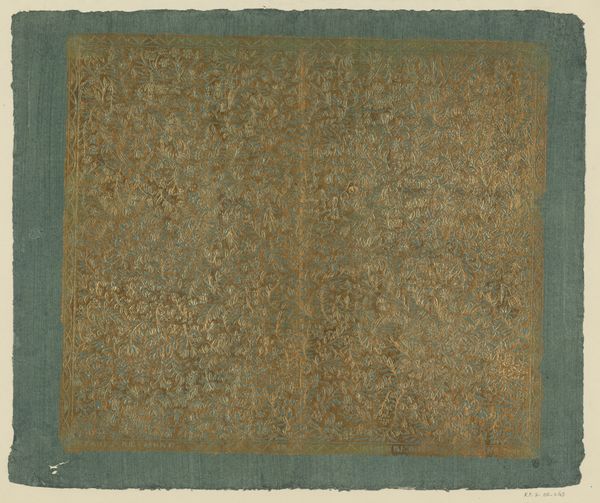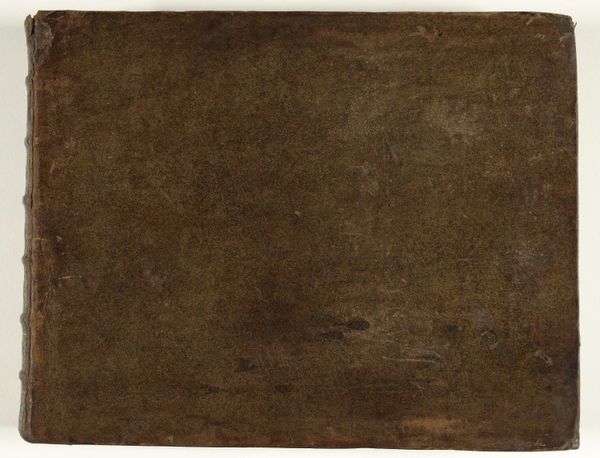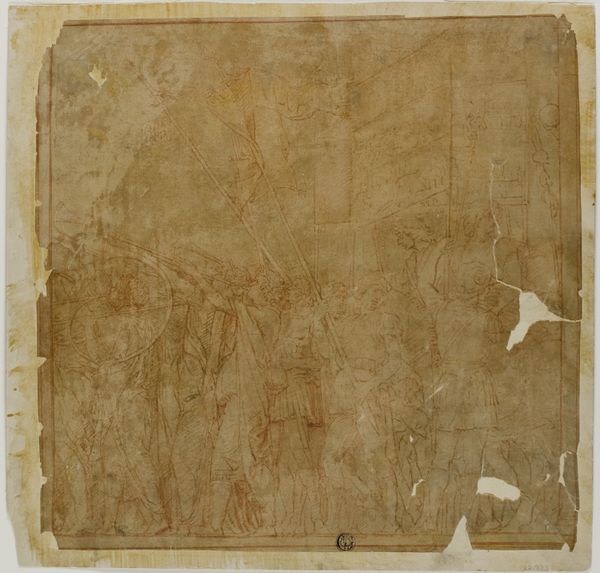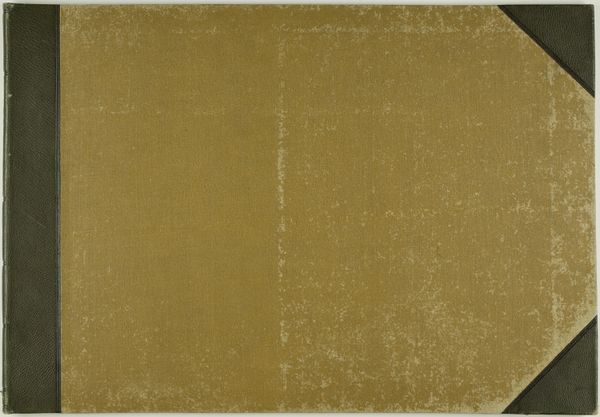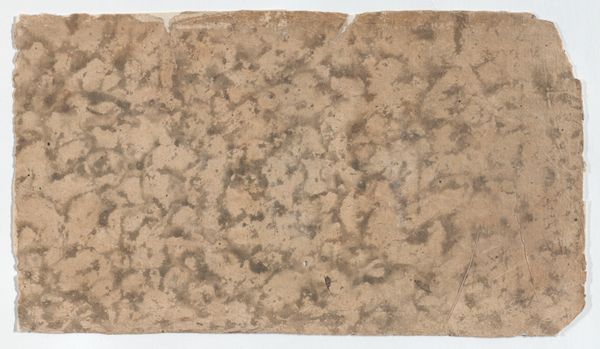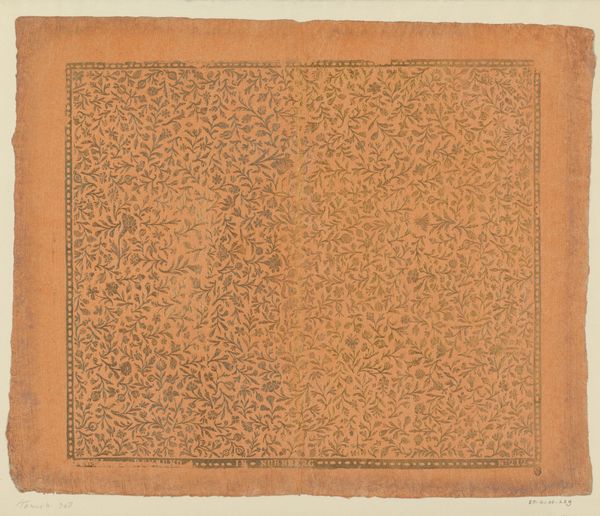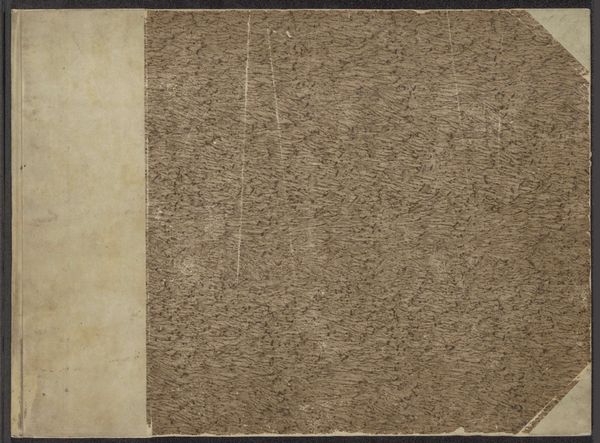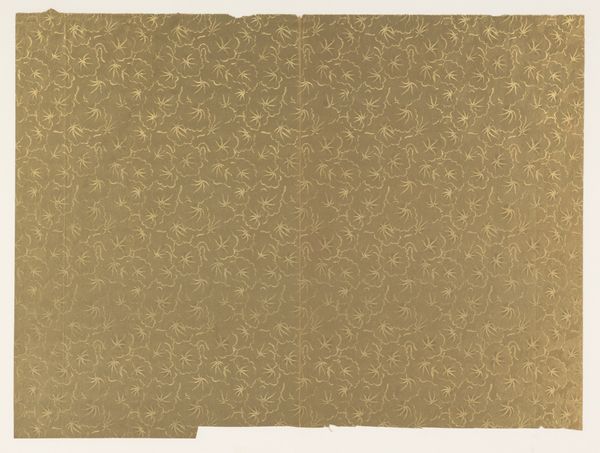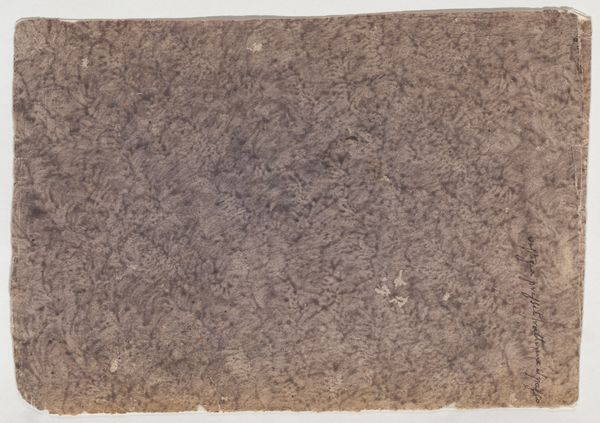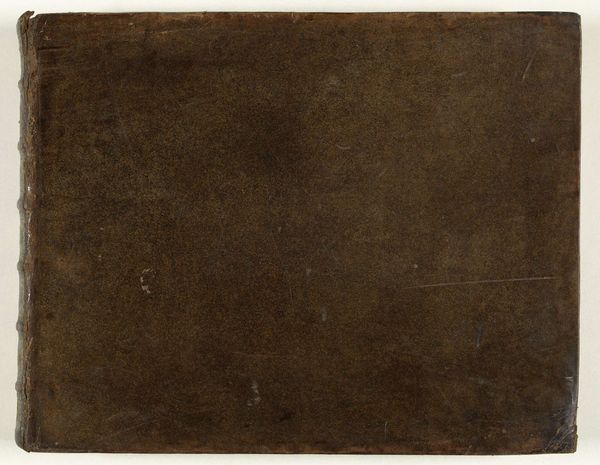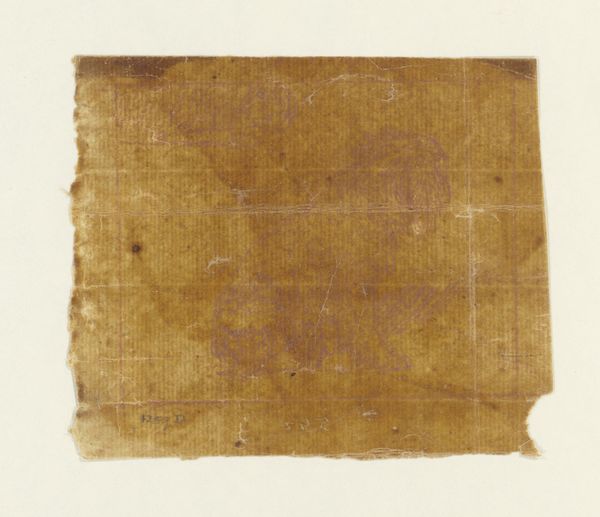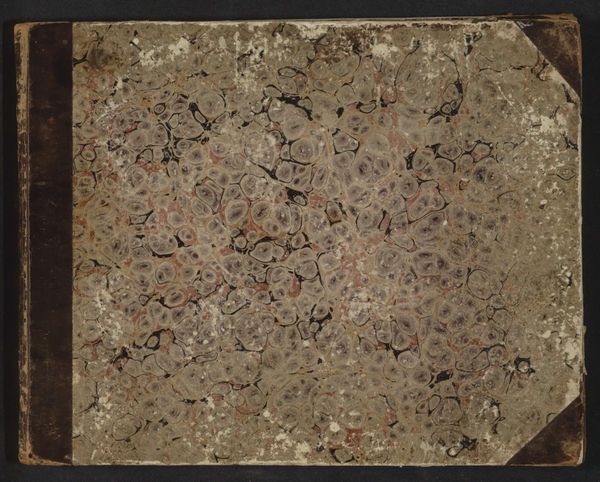
drawing, paper, watercolor
#
drawing
#
organic
#
water colours
#
paper
#
watercolor
#
folk-art
#
organic texture
#
watercolor
Dimensions: height 305 mm, width 345 mm
Copyright: Rijks Museum: Open Domain
This page with tendrils and fruits was created by Johann Maisch in the 19th century. Look at how the tendrils intertwine, creating a dense, fertile pattern reminiscent of ancient friezes. The vine, with its winding tendrils and abundant fruit, has been a powerful symbol across cultures. From ancient Greece, where it represented Dionysus, to Christian art, where it symbolized the blood of Christ and spiritual nourishment. The repetition of the image in a pattern makes me think of the ancient Roman mosaics, and how they resurface in the wallpapers of William Morris. Consider how this motif, laden with associations of abundance and life, appears here flattened into a decorative pattern. Has its original emotional and psychological impact been diluted over time? Or does it still retain some primal connection to our collective memory of nature's bounty, engaging us on a subconscious level? The symbol progresses cyclically, constantly resurfacing to gain new meanings in different historical contexts.
Comments
No comments
Be the first to comment and join the conversation on the ultimate creative platform.
